As is evident, 12-volt generator batteries are one of the most common forms of power storage used for many portable applications. Whether it’s for running various machinery on a job site without easy access to a power source, or ensuring your recreational camper serves as expected on a cross-country trip, or you are just on a rainy day, overshadowing the pin-drop silent, bustling city. In all the named cases, one thing is sure: the batteries in question always have the power you need — steady and reliable, enabling your gadgets to function correctly. This also serves as a brief ‘how-to’ guide, examining misconceptions about 12-volt generator batteries. Various aspects of 12-volt battery technology are explored, and this concise introduction delves into the same advancements. Do keep reading up to the stage of purchasing approach; all chapters will be covered in full.
Understanding 12 Volt Generator Batteries
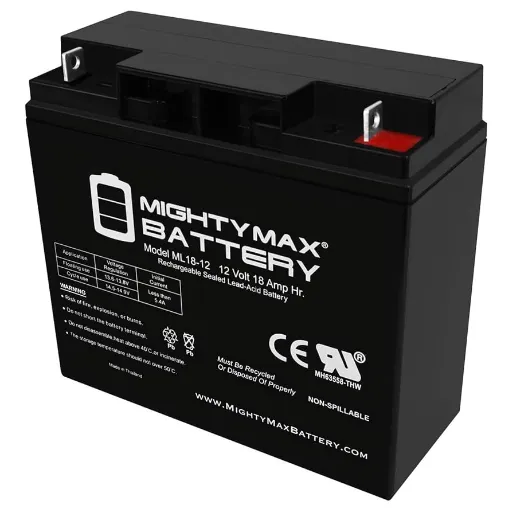
The 12-volt battery for generator applications is a relatively small electrical power package used to provide an uninterrupted energy supply for specific applications, such as portable generators, emergency backup systems, and recreational gadgets. Such generators are typically used in external portable power sources, such as lead acid or lithium-ion batteries, and, when maintained properly, their lifespan is long with reliable use. Generator batteries eliminate the need for a mains connection to power up the generator whenever required or to maintain a power supply in the absence of a mains supply. The correct 12-volt battery has the capacity of power needed (measured in amp-hours) for the most demanding appliances, withstands wear and tear, and is also compatible with a particular high-voltage generator. Good care and proper maintenance, especially routine inspections to assess the state of charge and minimize discharge, are necessary to maximize the battery’s performance and extend its lifespan.
What is a 12 Volt Generator Battery?
The battery for a 12-volt generator is an indispensable structural element, serving to deliver a stable and robust DC source for generator cranking and the needs of its accessories. These batteries are usually available in two types, with lead-acid and lithium-ion technologies being the most sought after, mainly due to the high current availability and resistance to long full discharges. Lead-acid batteries, which include VRLA types like flooded, Absorbed Glass Mat, and gel, are preferred by many due to their low cost and high performance. As a better option, those made of lithium-cobalt are being selected by consumers due to their lighter weight, longer lifespan, and the ability to charge faster.
The capacity of a 12V battery, in terms of Ah, refers to the amount of power that can be stored and discharged within a specified time frame. Therefore, it is necessary to evaluate the required capacity to generate power, especially in cases of frequent or severe generator operation. Furthermore, there are other factors, such as temperature performance, vibration resistance, and maintenance courtesy of the battery design, which also significantly influence battery performance.
Types of 12 Volt Generator Batteries
| Type of Battery | Capacity Range | Maintenance Needs | Primary Advantage | Best For |
|---|---|---|---|---|
| Lead-Acid (Flooded) | 20-200 Ah | Regular water refilling | Low cost | Low-frequency use |
| AGM (Absorbed Glass Mat) | 30-400 Ah | Maintenance-free | Long lifespan & vibration-resistant | High-demand applications |
| Gel | 30-200 Ah | Maintenance-free | Robust in extreme temperatures | Off-grid environments |
| Lithium-Ion | 50-500 Ah | Maintenance-free | Lightweight & fast charging | Portable generator setups |
| Nickel-Cadmium (NiCd) | 50-300 Ah | Occasional maintenance | Durable & long cycle count | Industrial applications |
Common Uses of 12 Volt Generator Batteries
Recreational Vehicles (RVs):
12-volt batteries, especially models such as AGM and Gel, are widely used inside RVs to operate appliances, lights, and other systems installed within. Because of their nature and design, which does not require maintenance, they are the best for those who are going to travel for long distances.
Marine Applications:
Most boats and a majority of other marine vehicles require gel & AGM batteries to power their navigation, bilge pumps, and auxiliary utility facilities. They also work well, as they are rated for increased vibration and operate efficiently even in damp or dewy conditions, making them a worthwhile investment for running such equipment.
Off-Grid Solar Systems:
Off-grid solar systems that require a power reserve typically run on Li-ion and gel batteries, which are well-suited for heat and can store generated electricity, ideally waiting for the optimal situation when more sunlight will be available.
Portable Generators:
For the same reason, people commonly use lightweight Li-Ion batteries in portable generators, charging them rather than relocating to other places, thus providing sustainable solutions for their power needs.
Industrial and Commercial Equipment:
High-density NiCd batteries are commonly used in industry due to their strength and high number of cycles when constructing factory equipment from cutting-edge technology materials that require high power loads, and having a UPS is not an option.
Emergency Backup Power:
AGM batteries remain the power source of choice for many buildings such as hospitals, extensive data storage facilities, and telecommunication signal relays as they have a long life span and provide higher discharge voltages when load-shedding occurs.
Main Features to Consider
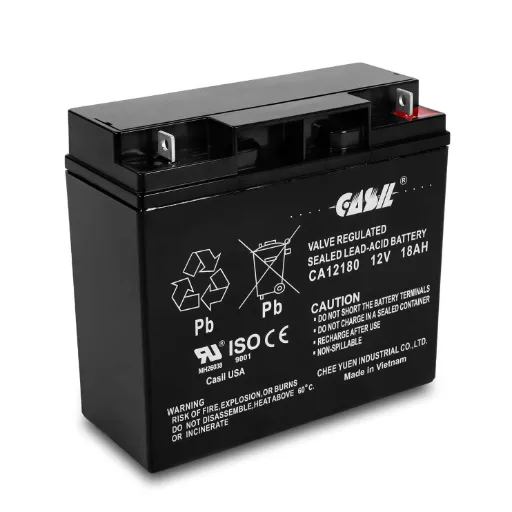
- Capacity and Output Requirements: Purchase a battery with the amount of energy you have going to use in the application, expressed in Amp-hours (Ah), to avoid any power disconnection or sudden light-out in the main points of use
- Lifespan and Cycle Life: Determine the battery’s operational life, durability, and the number of discharge and charge cycles it can support, as these parameters control the battery’s efficiency and value over time.
- Maintenance Needs: There are batteries, such as AGM and Lithium-ion, which can be used without any maintenance stress, and there are also those like Ni-Cad, which may require occasional assistance.
- Environmental Conditions: The confines assessed refer to the battery’s ability to function effectively within the general or specific temperature, humidity, or vibration limits, particularly in outdoor or industrial settings where operating parameters, although stipulated, are not adhered to.
- Cost Efficiency: When assessing, cost inefficiency not only includes the initial costs but also encompasses the economy during the production process, the cost of operating the taconite rail stock, and finally, the costs associated with replacing the material.
- Safety Features: To maximize the safety and reliability of the battery, measures should be implemented to prevent it from wearing out or overheating, such as overcharge protection and thermal management features. Additionally, the design should avoid destabilization under various conditions.
Battery Capacity and Wattage
Battery capacity, expressed in terms of mAh, allows for hours and ampere-hours, representing the capacity of an electrical battery charge in units of mass-hours (mAh). This is also an essential parameter for establishing the endurance of a device or a program on a single charge. Higher capacities, on the other hand, are desirable for high-energy consumer applications, though weight or even size may increase in the battery unit. Wattage refers to the delivery of power and is a measure of energy rate, calculated as V x A. This is also important because it allows for configuring the battery capacity to the energy needs of a given device or set of devices.
A practical method of stimulating the evolution of societies and, at the same time, of avoiding conflicts and discrepancies can be achieved by using legislative and administrative measures enhanced by adequate institutional arrangements and tools. In this regard, the modern tradition of developed countries, including European countries, in national energy consumption is an example of how to achieve poverty eradication through the adequate provision of energy services, as well as ensure peace and sustainable economic development that is environmentally friendly. By extension, the right to electricity and access to it is not only obtainable and maintained by the government but can also be enjoyed by its citizenry.
Battery Cycle and Discharge Rates
One key factor that influences a battery’s performance is its life cycle and rate of discharge, both of which cannot be examined in isolation because they collectively determine its overall effectiveness. Essentially, Battery cycle life refers to the number of full charge and discharge cycles that the cells can undergo before the waste reaches a specific volume. For this waste volume, it is generally referred to as almost 20% of the original capacity. In the case of Lithium-ion batteries, for example, they can last for 300 to 1000 cycles, depending on the chemical composition of the battery, usage scenarios, and practices.
The rate at which the battery is discharged, measured in terms of C-rate, indicates the rate at which the battery is discharged. The discharge rate of 1C means the discharge of electricity in the battery in one hour, while 0.5C means discharging half of the battery in half an hour. However, going further than this, the damage rate in terms of 0.5 °C also improves internal resistance and creates heat, and undermines the viability of the capacity substantially. Such changes are typical for electric vehicles whose batteries operate in a high-thermal regime; however, most of these changes involve the design of the battery pack itself. Battery performance at heavier loads is even better, and it is also suitable for walking – now that ability can be adjusted using information about the effects of those dangers. Understanding and optimizing such interplaying factors is crucial for determining the most suitable battery requirements for applications such as personal electronics or grid energy storage systems.
Compatibility with Generator Models
Adjusting the specifications of energy storage and generator models so that they can work together properly is closely tied to having a solid understanding of electrotechnics. Problems such as the acceptable voltage range, possible amperage output, and the amount of power a generator can produce are the primary ones. Contemporary generators mainly contains advanced inverter control systems and can accommodate the energy storage and typically lithium-ion or lead acid storage systems easily. Even the battery management system and the generator itself have to communicate in conjunction with an accurate time delay and gain control. When these devices are characterized correctly, they not only possess functional reliability and eliminate energy leakage but also improve the system’s mechanical life.
Top Brands of 12 Volt Generator Batteries
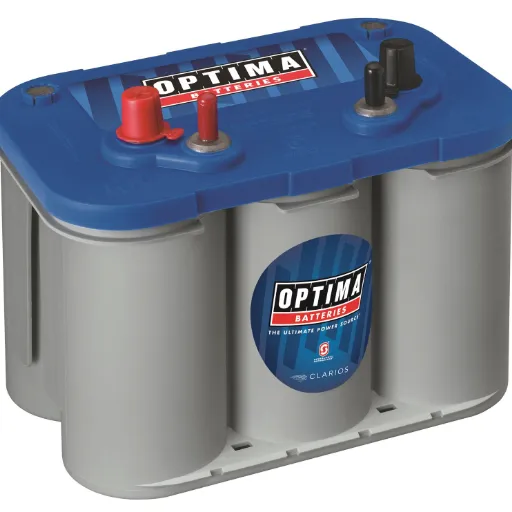
In addition to the aspects of the brands mentioned above, it is also essential to consider the price of the 12-volt generator battery. Some of the top manufacturers are mostly for:
- Optima Batteries: Refers to their SpiralCell Technology, which offers excellent performance and longer life, making them suitable for heavy usage applications.
- Battle Born Batteries: Also a specialist in muscle building with lithium-ion prosperity, it develops batteries with very high tolerance, safety and long-term reliability.
- Interstate Batteries: It is the best epitome of excellence in battery manufacturing without sacrificing pricing in the name of quality, possibly due to their consistent quality.
- Odyssey Batteries: In line with the need for versatility, their AGM products can power the car’s starter and lights and can also be deeply discharged.
- Vmaxtanks: These AGM batteries by Vmaxtanks – a hybrid of robust nature and practicality – have features that cater to both backup and recreational purposes, while still offering benefits and can be easily maintained.
Review of DuroMax Batteries
To begin with, the DuroMax batteries, it should be noted that when it comes to using UPS or solar panels, one of the most pronounced varieties is the high-voltage 12V generators. As the name suggests, the use of these batteries is significant for protection, making them ideal for applications off the grid. The manufacturers have ensured that these rechargeable components can last for a long time on a single charge, thanks to the high energy storage capacity of the battery, along with the appropriate protection it receives. They use the modern AGM (Absorbent Glass Mat) gel in the sealing of the batteries, making them even more shock-resistant, hence requiring shieldless anti-vibration measures and minimal attention that suits them to harsh environments. In an effort to ensure that all safety issues are addressed, the battery’s life can be extended to the point where it would compensate all customers who have purchased and engage in deep-cycle charging as a matter of standard industrial practice. An upgrade kit is available to connect the Truma to Perfect Power Mains, which is necessary when rechargeable batteries require longer cables, such as for the awning.
Champion Brand Overview
Champion Power Equipment delivers solutions that perform exceptionally well even in locations with low climates. It is a highly anticipated addition to the collection because it is a product project. With minimal effort, attempting to transfer the units from backup to the principal location results in a false move, and the service is lost, unable to be recovered. Quite an issue, one may say. However, beyond the matter of convenience, these are powerful tools that are often necessary for human activities, whether recreational or otherwise. Experts come up with better ways to utilize these new inventions, and they are often regarded as power or fuel devices. Or rather, this must be due to the drive factor that humans will never be content with ‘just enough’ and will always want more by achieving better results or improving something.
Firman Battery Features
- High Energy Density: Custom batteries are designed for the benefit of battery-powered devices and tools, as they carry more energy per unit weight.
- Advanced Lithium-Ion Technology (in applicable models): These batteries have been a significant addition in situations where lithium ions are used, due to their ability to recover quickly and store charge, as well as several other advantages that traditional gelled-acid batteries lacked.
- Overload Protection System: The batteries are manufactured with an overload protection system that prevents potentially hazardous situations that may lead to overload. This system ensures no overcharge, no overheating, and no short circuit, keeping the batteries safe and durable.
- Wide Operating Temperature Range: The way the batteries are made allows them to function efficiently in different conditions and in between -4°F (-20°C) and 140°F (60°C), Firman batteries will give the best results, while a lot of heat and cold can be extreme.
- Deep Cycle Capabilities: Deep discharging may occur frequently, even in small doses, without permanently depleting the battery’s capacity, making them ideal for situations requiring continuous power use.
- Maintenance-Free Operation: Firman batteries require no elaborate care, resulting in expedient and easy power distribution with no need for monitoring water electrolyte loss, which is typically associated with conventional batteries.
Replacement and Maintenance Tips
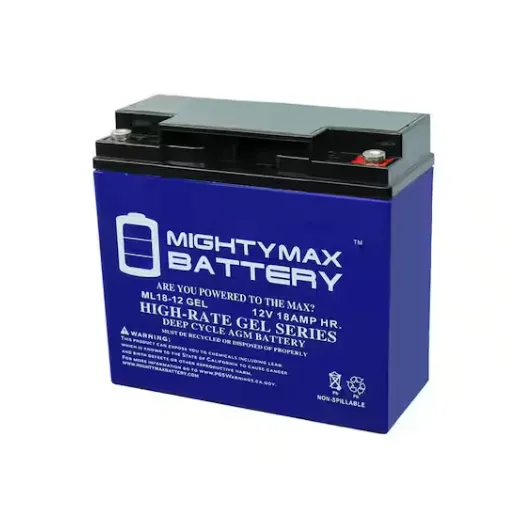
Replacement Guidelines
- When to Replace: You need to replace the battery when you are unable to hold a charge or the battery’s joules are less than the stipulated values each time it is fully charged. Check for signs of wear and tear that can be attributed to the battery, such as corrosion and termite damage, before deciding on replacement.
- Proper Disposal: To prevent pollution by hazardous materials, old batteries should be taken to the nearest electronic waste disposal center or recycling drop-off facility.
- Storage Recommendations: Store the batteries in a dry, cool, and dark place to prevent damage from high temperatures. This helps preserve battery life and ensure consistent performance.
- Regular Inspections: A situation arises when a potential generation or distribution system needs to be accessed, and the patches and connections have been altered or buried, with abandoned devices encountering rust. In such cases, the omitted connection points must be established without prejudice to the interruptible end-user or operators.
When to Replace Your Generator Battery
Learn how to tell when something needs replacing, as far as the battery for the backup generator is concerned. Generally speaking, many backup generator batteries will last for 3-5 years. However, factors such as usage frequency, maintenance, and local climate also play a role. For example, – as for reasons why you have to remove a generator, it can be very hard to stay close to the unit to start it or sometimes it will have a fall in the DC charge with noticeable signs of any form of rust in the battery terminals. The battery’s power and performance levels can be determined more precisely, and the loading tests that should be done may be helpful in this process. Importantly, one should consider that the manufacturer’s recommendations must be applied within the scope of the particular device, and professional technical personnel should perform occasional monitoring and check tasks to identify probable faults before they interfere with the device’s proper functioning.
Maintenance Tips for Longevity
Perform Regular Inspections
It includes scheduled monthly visual assessments for wear, leaks, or damage, which are known to drop mechanical failures by around 30%. This means that emphasis should be placed on the areas that are subjected to the most stress, such as belts, filters, and connections; there’s a good chance of preventing minor problems from developing into nuisances.
Adhere to Lubrication Schedules
Proper lubrication of moving parts reduces friction and prevents premature wear. Lubricate only with approved bearing lubricants, and always record each lubrication to achieve repeatability. The Machinery Failure Prevention Technology (MFPT) Society’s report states that 40% of equipment failures were due to poor lubrication.
Check Fluid Levels Regularly
Monitor critical fluid levels such as engine oil, coolant, and hydraulic fluids at least once a week. The so-low or contaminated fluid conditions could cause overheating or mechanical failure. For reference, 21% of industrial machinery downtime is attributed to inadequate oil maintenance.
Replace Filters on Time
It is essential to check and clean filters or place them in cotton, if necessary, to ensure proper airflow and fluid movement. Always replace all air, gas, and oil filters regularly in accordance with the manufacturer’s instructions, so that the equipment’s working order is not affected.
Tighten Bolts and Connections
During the assembly of the prototype, apply appropriate torque to the fastening elements such as bolts, nuts, screws, and washers. Suppose a machine of a given type has been in operation for a long time. In that case, the problems of vibration-induced squeezing and loosening will compromise the safety and functionality of the product.
Keep Components Clean
Dust, debris, and moisture can significantly impact operations if not properly managed. Clean accordingly, using the right means, such as compressed air or cleaning agents. Maintenance audits reveal that when equipment is well cleaned, it works about 15% to 20% more efficiently.
Troubleshooting Common Issues
Equipment Fails to Start
Check the power supply and connections for any operation disruption. For electrically powered devices, verify that the circuit breakers and fuses are functioning correctly. Also, examine for loose wiring or any corrosion that can interfere with the electrical flow. For battery-operated setups, the battery voltage must be checked to verify if it falls within the specified operational range.
Irregular Performance or Fluctuations
Machines that exhibit inconsistent behavior will most often indicate wear in mechanical components or some calibration adjustments. Review operational parameters against the manufacturer’s specification. Additionally, conduct a diagnostic check on the critical sensors or actuators that may have become misaligned, contaminated, or malfunctioning.
Overheating
Overheating is usually encountered when there is inadequate lubrication or an obstructed ventilation system. Check the oil level, the coolant system if applicable, and the air flow path to ensure they are in good condition. Regular cleaning of the air filter and radiators, therefore, goes a long way in preventing thermal stresses to the components.
Excessive Vibrations or Noise
Vibrations are usually symptoms of misalignment, unbalanced loads, or damaged bearings. Continue with the aim of identifying sources of faults, such as loose bolts and misaligned gears. The use of vibration analysis tools for rotational equipment can further help in locating specific faults.
Decreased Efficiency or Output
Naturally, the malfunctioning situation might also arise from the wear and tear of the components and the dirt that begins to accumulate. It is advisable to regularly clean and inspect the equipment for parts that are prone to blockage, such as filters, valves, or nozzles. Additionally, for those with software- or firmware-dependent machinery, check for updates being performed to mitigate inefficiencies that result from outdated software.
Buying Guide for 12 Volt Generator Batteries
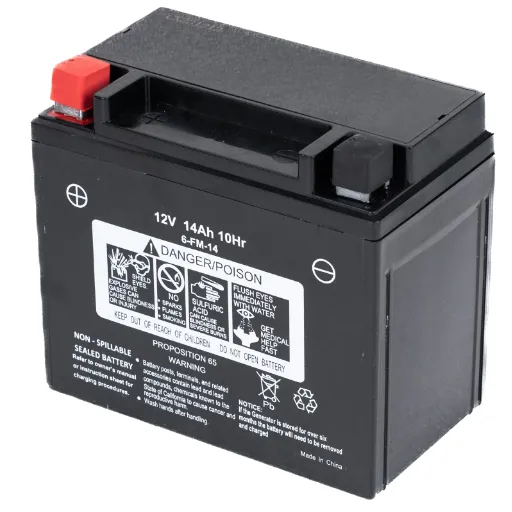
Battery Type
The option is to use either lead-acid (flooded or sealed) or lithium-ion batteries. Sealed lead-acid batteries stand out due to their less invasive design, but they are maintenance-heavy. In contrast, advanced qualities such as high energy densities, extended runtimes, and low maintenance requirements characterize Lithium-ion batteries.
Capacity (Ah)
The service capacity of the battery has to be checked. This capacity, measured in ampere-hours (Ah), specifies the runtime of longer generator operations with higher capacity. Select the capacity according to your purpose of electricity.
Cold Cranking Amps (CCA)
Keep high CCA ratings in mind when planning on using the generator in cold areas to ensure a reliable start in lower temperatures.
Durability and Lifespan
A good battery design is always preferred, one that incorporates vibration resistance and long cycle life as essential features. Look for the lifecycle rating from the manufacturer to get a better understanding.
Compatibility
Ensure that the size, terminal arrangement, and voltage output of the battery are compatible with your generator type. Refer to the manuals for recommendations specific to your generator.
Maintenance Requirements
If you do intend to use lead-acid batteries, decide whether maintenance-free sealed batteries better serve the application or if you are willing to maintain flooded batteries.
A 12-volt generator battery with reliability, efficiency, and good performance can be achieved by being mindful of all these factors, tailored to precise needs. Always refer to the manufacturer’s recommendations and the installation guide provided in the generator user manual.
Evaluating Battery Types and Technologies
It becomes critical to know the distinction in battery technologies to match performance to application needs when selecting the correct battery. Lead-acid batteries, of course, are very popular because they are cost-effective and reliable. These include flooded, AGM (Absorbent Glass Mat), and gel batteries, all of which have their advantages. Flooded batteries require regular maintenance, but they perform very well in high-cycle applications. AGM batteries offer a maintenance-free option with higher vibration resistance and faster charging capabilities for modern high-performance systems. Gel batteries are ideal for extreme temperatures and provide less leakage-prone solutions for challenging environments.
Have your specific application in mind when considering these technologies. For example, recreational use may require portability and low weight, favoring lithium-ion batteries; in contrast, demanding industrial applications may consider a sealed AGM or gel battery for peak reliability. Understanding the interactions between environmental impacts, charge cycles, load requirements, and battery attributes sheds light on a perfect compromise between efficiency and durability.
Price Comparisons and Value for Money
When evaluating a battery, cost must be considered not only in the initial purchase price but also within the total cost of ownership (TCO) analysis. For example, lithium-ion batteries typically have higher initial costs compared to AGM or gel variants; however, their shorter life cycle and higher energy density render them more economical over time in frequent cycling applications. Conversely, AGM and gel batteries offer a lower initial investment and deliver excellent performance in assignments that require stationary or less-demanding applications.
Moreover, recent market surveys have indicated a trend toward competitive pricing, driven by fast-paced technological advancements and growing manufacturing capabilities. There have been reductions in manufacturing costs and increases in energy efficiency, which have pushed lithium-ion batteries into more applications. Finally, an accurate determination of the best value for money involves not only the purchase price but also capacity ratings, longevity, and performance in the desired operating conditions, so that the chosen battery is acceptable within budget restrictions and meets application requirements.
Reference Sources
-
Lithium-Ion Polymer Battery for 12-Voltage Applications
- Key Findings: This study focuses on the development of a high-fidelity 80Ah 12-volt lithium-ion polymer battery pack with a nominal voltage of 14.4V. It highlights the efficiency and reliability of lithium-ion technology for 12-volt applications.
-
Eco-Electric Energy Generator System Using Human Interaction
- Key Findings: This paper explores an eco-electric energy generator system that uses human interaction to charge 12-volt batteries (35Ah and 60Ah). It emphasizes sustainable energy solutions and battery safety mechanisms.
Frequently Asked Questions (FAQs)
Q: What are the features of 12V generator batteries?
A: 12V generator batteries are packed with different qualities aimed at making them efficient and dependable. Many of them are commonly known as sealed lead acid (SLA) batteries, which are designed to maintain themselves. One of the common picks is the 12V 18Ah, which is known to work okay with portable generators. Such products are often built to last for a long time due to their high quality, making them best suited for outdoor environments. Certain types of products come complete with features such as stoppage for discharge and temperature protection.
Q: What is the price range for high-quality 12-volt generator batteries?
A: The price of 12-volt generator batteries of superior quality can fluctuate considerably depending on the brand and features. In general, prices range from $50 to $150 for a dependable battery, considering aspects such as type, wattage, and the number of various equipment the battery is compatible with. Moreover, brands such as Firman and Champion offer products to suit everyone’s tastes and, more significantly, their budgets. It is, therefore, advised that the convenience and utility of high-quality batteries should be considered, as inexpensive batteries may compromise their functionality and durability. It must always be remembered that batteries are expensive; therefore, comparing the warranty of different brands to make the best choice is not a bad idea that may also save one from unnecessary disappointments
Q: What are the advantages of using SLA generator batteries?
A: Sealed Lead Acid (SLA) batteries are an all-around choice that battery users make for several reasons. First, these types of batteries are maintenance-free in the sense that one does not have to worry about regular watering, as would be necessary with flooded batteries. This is especially useful when discussing portable types of batteries. These batteries can also be discharged down to deeper levels efficiently. They have a longer lifespan compared to traditional lead-acid batteries commonly found in systems. Their spill-proof construction makes them easier to use in multiple scenarios. It is safe to conclude that a design of such type is practical in form and manner for all generator starting purposes
Q: What should I consider for battery compatibility with my generator?
A: Taking your generator’s battery requirements into account, its voltage, ampere-hour rating, and physical size are the most vital factors to consider. Before purchasing a black powder cartridge, ensure that it is compatible with the gas generator’s specifications, as most portable gas generators operate at 12 volts and require a 12-volt gas generator battery. Ensure that the electric capacity, expressed in ampere-hours, is sufficient to meet your needs, regardless of whether it is a 12V 18Ah or an 8Ah battery. Lastly, ensure that all the physical parameters of the product meet your requirements, such that the gas generator provides for through mounting in the gas generator housing. A possible solution may be found in the user’s and instruction manuals for the generator.







